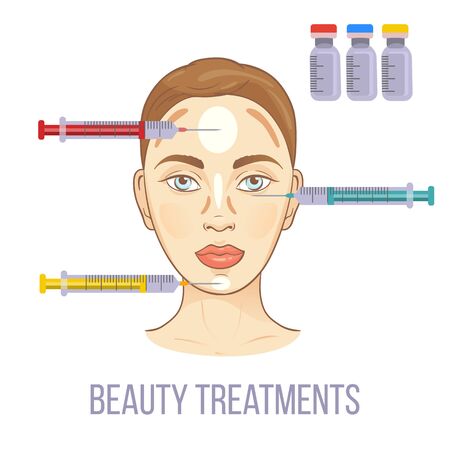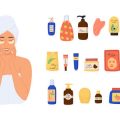1. Understanding Hormonal Imbalance and Pimples in India
Hormonal imbalance is one of the most common causes of pimples among Indian teenagers and adults. In India, the onset of puberty, stressful academic routines, irregular sleep cycles, and a fast-paced urban lifestyle contribute to fluctuating hormone levels. These hormonal changes often lead to increased sebum production, clogged pores, and eventually pimples or acne outbreaks. For women, menstruation, pregnancy, and conditions like PCOS are significant triggers for hormonal shifts resulting in skin issues. Additionally, Indian diets rich in spices, fried foods, and dairy can sometimes aggravate these breakouts. It is important to understand that while pimples are a natural response to internal changes, cultural habits such as using heavy makeup or not cleansing the face after long commutes may worsen the problem. By recognising how everyday routines and local factors influence hormonal balance, Indians can better address the root cause of their skin concerns and seek effective remedies.
Common Signs of Hormonal Pimples
Hormonal pimples, especially among Indians, often present unique patterns influenced by our climate, traditional diets, and daily lifestyles. Understanding these typical signs can help you identify the root causes and choose remedies that work best in the Indian context.
Typical Symptoms of Hormonal Pimples
| Symptom | Description | Indian Context |
|---|---|---|
| Deep, Painful Bumps | Pimples are usually cystic, red, tender to touch, and located deeper under the skin. | Often seen on the jawline and chin, especially during periods or hormonal changes. |
| Recurring Breakouts | Pimples tend to appear regularly around the same time each month. | Commonly noticed before menstruation or due to stress related to exams or work. |
| Oiliness and Shine | The skin appears extra oily, particularly in the T-zone (forehead, nose, chin). | Aggravated by humid Indian summers and spicy, oily foods. |
| Dark Spots & Hyperpigmentation | Pimples often leave behind dark marks after healing. | Darker Indian skin tones are more prone to post-acne pigmentation. |
| Clusters of Small Pimples | Multiple small pimples grouped together rather than isolated spots. | More common due to sweat and dust exposure in crowded cities. |
Cultural and Dietary Influence on Acne Patterns
Diet: A diet rich in dairy (curd, paneer), ghee, deep-fried snacks (samosa, pakora), and sweets can increase sebum production and worsen hormonal pimples. Spicy food may also trigger inflammation.
Climate: The hot and humid weather in many parts of India leads to more sweating and clogged pores.
Lifestyle: Late nights during festivals, exam seasons, or long commutes can disturb hormonal balance. Heavy use of cosmetic products for functions and weddings may further clog pores.
Cultural Habits: Use of hair oils or covering heads with dupattas/scarves can cause forehead acne due to oil transfer.
How to Recognise If Your Pimples Are Hormonal?
- Pimples mainly on lower face (jawline/chin)
- Painful, red bumps rather than blackheads/whiteheads alone
- Tend to flare up just before your period or during times of stress
- Leave behind stubborn dark spots (hyperpigmentation)
- No improvement with regular over-the-counter creams or face washes
If you notice these signs—especially in relation to your monthly cycle or lifestyle shifts—it’s likely that hormonal imbalance is playing a major role in your breakouts. In the next section, we will discuss effective Indian home remedies to address these specific concerns.
![]()
3. Why Hormonal Imbalances Happen: Indian Perspective
Hormonal imbalance is a common trigger for pimples, especially among Indian teenagers and adults. Several unique factors in India contribute to this issue, ranging from dietary habits to environmental conditions and lifestyle choices.
Dietary Patterns and Spices
Traditional Indian diets are rich in carbohydrates, dairy, and deep-fried foods. While spices like turmeric and cumin have health benefits, overconsumption of oily snacks, sweets, and dairy may disrupt hormonal balance. The increasing popularity of processed foods and sugary drinks in urban India further exacerbates these imbalances, making skin more prone to pimples.
Stress from Academic and Social Pressures
Indian students often face immense pressure to perform well academically. Additionally, societal expectations regarding career and marriage can lead to chronic stress. This prolonged mental strain triggers the release of cortisol, a hormone that can disrupt the normal function of other hormones like insulin and androgens, often resulting in breakouts.
Puberty and Changing Lifestyles
The transition through puberty is a major cause of hormonal fluctuations. In India, early or late onset of puberty—sometimes influenced by genetics or urban living conditions—leads to increased oil production in the skin. Coupled with new lifestyle trends such as irregular sleep patterns, excessive screen time, and lack of physical activity, the risk of developing pimples is heightened.
Urban Pollution and Environmental Factors
Cities like Delhi, Mumbai, and Bangalore struggle with high levels of air pollution. Pollutants can not only clog pores but also interfere with the body’s hormonal regulation by causing oxidative stress. Moreover, exposure to harsh sunlight without adequate sun protection adds another layer of complexity to maintaining hormonal balance in Indian climates.
Cultural Beliefs and Health Trends
Many families still rely on Ayurvedic principles for maintaining hormonal health, using remedies like neem leaves or tulsi tea. However, the growing influence of Western fast food culture and sedentary habits is challenging traditional wellness practices. Awareness about the importance of balanced nutrition, regular exercise, yoga, and meditation is rising across Indian cities as people seek holistic approaches to manage both hormones and skin health.
4. Trusted Indian Home Remedies for Hormonal Pimples
When it comes to addressing hormonal pimples, Indian households have long relied on natural remedies that are gentle, affordable, and rooted in Ayurveda. The following ingredients are commonly found in most Indian kitchens or gardens and are praised for their skin-healing properties.
Turmeric (Haldi)
Turmeric is a powerful anti-inflammatory and antibacterial spice used in Indian skincare for centuries. Mixing turmeric with curd or rose water creates a soothing face pack that helps calm inflamed pimples caused by hormonal imbalance.
How to Use:
- Mix 1 teaspoon turmeric powder with enough curd/rose water to form a paste.
- Apply to affected areas, leave for 15 minutes, then rinse with lukewarm water.
Neem (Indian Lilac)
Neem leaves are known for their ability to purify the skin and combat bacterial infections. Neem paste or neem water is effective in reducing pimple-causing bacteria and controlling oiliness.
How to Use:
- Grind fresh neem leaves into a paste and apply directly to pimples.
- Alternatively, boil neem leaves in water, strain, and use the cooled liquid as a toner.
Tulsi (Holy Basil)
Tulsi leaves possess antimicrobial properties that help fight acne-causing bacteria. Applying a tulsi mask can soothe irritated skin and promote faster healing of pimples.
How to Use:
- Crush tulsi leaves and mix with honey or rose water.
- Apply the mixture to your face for 10-15 minutes before rinsing off.
Sandalwood (Chandan)
Sandalwood has cooling properties and helps reduce redness and swelling associated with hormonal breakouts. It also leaves the skin feeling refreshed and smooth.
How to Use:
- Mix sandalwood powder with rose water or milk to create a smooth paste.
- Spread evenly on affected areas, leave for 20 minutes, then wash off gently.
Multani Mitti (Fullers Earth)
A staple in Indian beauty routines, multani mitti absorbs excess oil, unclogs pores, and soothes inflamed skin—making it ideal for oily and acne-prone complexions common during hormonal fluctuations.
How to Use:
- Combine multani mitti with rose water or plain water to make a thick paste.
- Apply all over the face or just on problem areas; let dry before rinsing off thoroughly.
Quick Reference Table: Indian Home Remedies for Hormonal Pimples
| Ingredient | Main Benefit | Common Method |
|---|---|---|
| Turmeric | Anti-inflammatory, reduces redness | Packed with curd/rose water |
| Neem | Bacterial control, oil regulation | Pasted or boiled as toner |
| Tulsi | Kills bacteria, soothes skin | Mash with honey/rose water |
| Sandalwood | Cools & calms inflammation | Paste with rose water/milk |
| Multani Mitti | Absorbs oil, unclogs pores | Paste with rose/regular water |
The best part about these remedies is their simplicity and accessibility within Indian homes. However, always do a patch test before trying new ingredients on your face to ensure no allergic reaction occurs. These traditional solutions can complement your skincare routine and support clear, balanced skin amidst hormonal changes.
5. Ayurvedic Tips for Balancing Hormones and Clear Skin
Ayurveda: An Indian Approach to Hormonal Harmony
Ayurveda, the ancient Indian system of wellness, offers holistic solutions for balancing hormones and preventing pimples. Many Indians trust these remedies as part of their daily routine to maintain clear and healthy skin.
Lifestyle Changes Rooted in Ayurveda
Regular routines, or Dinacharya, are highly recommended. Waking up early, practicing yoga, and meditating help reduce stress—a major trigger for hormonal imbalance. Sleep is another pillar: aim for 6-8 hours of restful sleep each night to allow your body’s hormones to stabilise naturally.
Herbs Widely Used in Indian Households
- Ashwagandha: This adaptogenic herb helps manage stress and supports hormone balance. Consuming Ashwagandha powder with warm milk is a popular Indian remedy.
- Shatavari: Known as a woman’s tonic, Shatavari helps balance female hormones and can be consumed as a supplement or in herbal teas.
- Tulsi (Holy Basil): Drinking Tulsi tea purifies the blood and reduces inflammation, helping to keep pimples at bay.
Practices for Clear Skin
- Abhyanga (Oil Massage): Regularly massaging your body with sesame or coconut oil improves circulation and detoxification, which supports hormonal health.
- Panchakarma: This detoxification therapy is practised under an Ayurvedic doctor’s guidance to cleanse the body and reset hormonal balance.
Eat According to Your Dosha
An Ayurvedic diet tailored to your dosha (Vata, Pitta, or Kapha) can prevent hormonal fluctuations that lead to breakouts. For example, Pitta types prone to acne should avoid spicy and oily foods, favouring cooling ingredients like cucumber and coriander.
By embracing these time-tested Ayurvedic lifestyle changes, herbs, and practices—well-respected in Indian culture—you can support hormonal balance naturally and enjoy clearer skin without harsh chemicals.
6. Preventive Measures and Daily Habits
Adopt a Simple and Consistent Skincare Routine
Maintaining a gentle skincare routine is crucial for preventing hormonal pimples. Use a mild, sulphate-free face wash with natural ingredients like neem or tulsi, which are popular in India for their antibacterial properties. Wash your face twice daily to remove excess oil and dirt, but avoid over-cleansing, as it may strip your skin’s natural oils. Apply a light, non-comedogenic moisturiser suitable for Indian humid weather. Remember to always remove makeup before bed to prevent clogged pores.
Indian Dietary Tips for Clear Skin
Your diet plays an important role in hormonal balance and skin health. Include fresh fruits like papaya and amla (Indian gooseberry), which are rich in antioxidants and Vitamin C, helping the skin fight inflammation. Add turmeric (haldi) to your meals, as it has anti-inflammatory benefits rooted in Ayurveda. Opt for whole grains like brown rice or millets instead of refined carbs, and include nuts like almonds and walnuts for healthy fats. Minimise oily, spicy, and processed foods which can trigger breakouts. Drink plenty of water and traditional drinks like coconut water or buttermilk (chaas) to keep your body cool and hydrated.
Stress Management: Indian Wellness Practices
Hormonal imbalances are often worsened by stress, leading to more pimples. Incorporate yoga or simple pranayama (breathing exercises) into your daily routine to calm the mind and balance hormones. Practising meditation or even a few minutes of mindful chanting can help reduce anxiety and improve overall well-being. Make time for regular physical activity—be it a morning walk or light exercise—which aids hormone regulation.
Additional Healthy Habits
- Change pillow covers frequently to avoid transferring oil and bacteria onto your skin.
- Avoid touching or picking at pimples to prevent infection and scarring.
- Get adequate sleep each night, aiming for 7-8 hours to support hormone function.
Conclusion
By combining these daily habits with effective Indian home remedies, you can significantly reduce the risk of hormonal pimples. Consistency is key—nurture your skin with care, nourish your body with wholesome Indian foods, and create space for relaxation in your everyday life.


